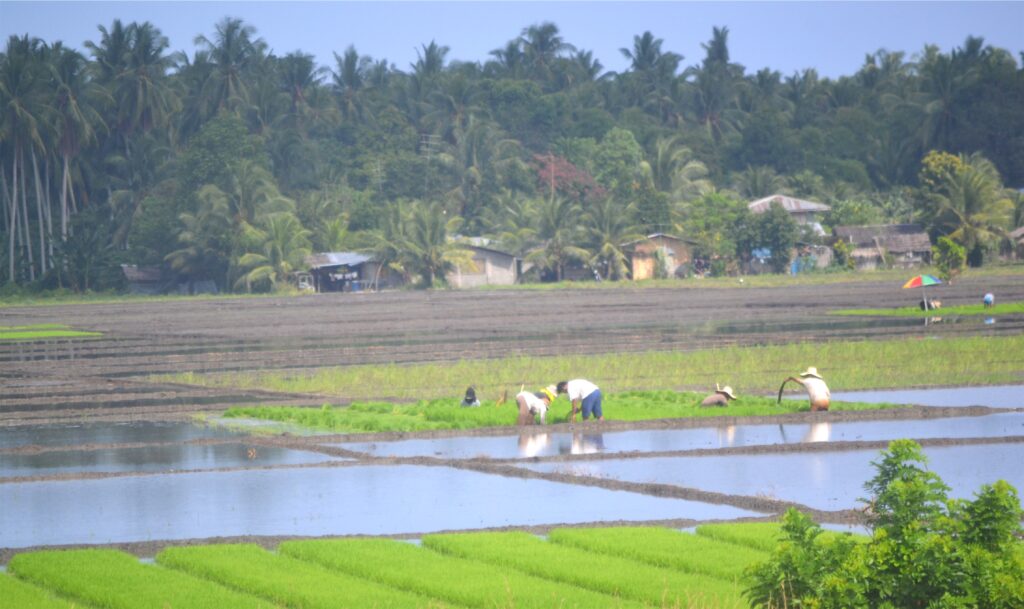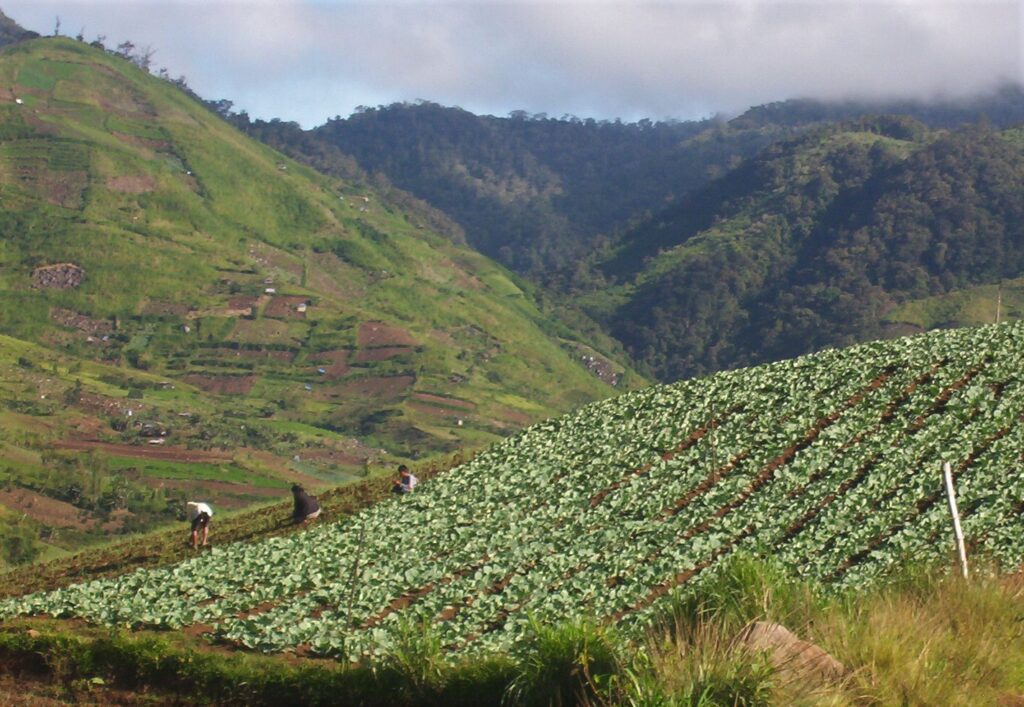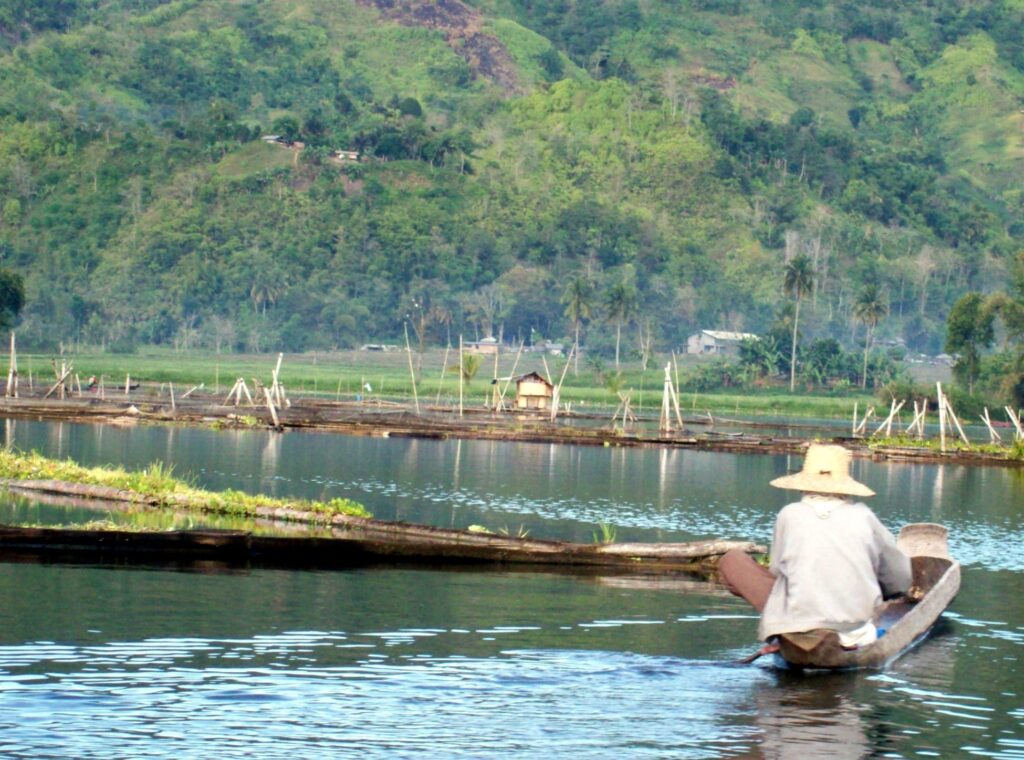Text and Photos by Henrylito D. Tacio
Don’t think of water shortage only due to the drought and dry spell, but also by man’s eating habits. In fact, the more people eat meat and rice, the more they are contributing to the water scarcity problem.
“The link between water and food is strong,” admits Lester Brown, president of Washington, D.C.-based Earth Policy Institute. “We drink, in one form or another, nearly 4 liters of water per day. But the food we consume each day requires at least 2,000 liters to produce, 500 times as much.”
In most of Asia, including the Philippines, water is the single most crucial component for sustainable rice production, especially in the traditional rice-growing areas, according to Thierry Facon, senior water management officer of the regional office of the Food and Agriculture Organization (FAO) in Bangkok, Thailand.
Current rice production systems consume a high amount of water. It takes about 3,000 liters of water to produce one kilogram of rice, reports the Laguna-based International Rice Research Institute (IRRI).
In his book, Food Revolution, author John Robbins said that 23 gallons of water are needed to produce one pound of lettuce, 23 gallons for one pound of tomatoes, 24 gallons for one pound of potatoes, 25 gallons for one pound of wheat, 33 gallons for one pound of carrots, and 49 gallons for one pound of apples.
Meat production also consumes a lot of water. “Agriculture uses about 70% of the world’s available freshwater, and one third of that is used to grow the grain fed to livestock,” reports the Worldwatch Institute.

Planting rice 
Growing cabbage
Most water-intensive
Beef, the meat used in most fast-food outlets, is by far the most water-intensive of all meats. “The more than 15,000 liters of water used per kilogram is far more than is required by a number of staple foods, such as eggs (3,300 liters per kilogram), milk (1,000 liters), or potatoes (255 liters).”
The US Department of Commerce 1992 Census of Agriculture’s Farm and Ranch Irrigation Survey, published in 1994, reported that one pound of pork needs at least 1,630 gallons of water to produce. Still, in contrast, one pound of beef requires 5,214 gallons of water.
“Producing beef is much more resource-intensive than producing pork or chicken, requiring roughly three to five times as much land to generate the same amount of protein,” the Worldwatch Institute points out. “Beef production alone uses about three fifths of global farmland but yields less than 5% of the world’s protein.”
Around the world, more than 40% of wheat, rye, oats, and corn production is fed to animals, along with 250 million tons of soybeans and other oilseeds. “Feeding grain to livestock improves their fertility and growth, but it sets up a de facto competition for food between animals and people,” the Worldwatch Institute says.
Global meat production and consumption have increased rapidly in recent decades, with harmful effects on the environment and public health as well as on the economy, according to research done by the institute’s Nourishing the Planet project. “Worldwide meat production has tripled over the last four decades and increased 20 percent in just the last 10 years,” it said. “Meanwhile, industrial countries are consuming growing amounts of meat, nearly double the quantity than in developing countries.”
The Philippines is already experiencing a water shortage, and it will be more apparent in the coming years. As the population continues to grow, it needs more land to be used for food production and more water to grow crops and raise livestock. Studies have shown that agriculture has the highest demand of all water use with 85% while the other sectors – industry and domestic – have a combined demand of only 15%.
“With the demand for water growing in all three categories, competition among sectors is intensifying, with agriculture almost always losing,” Brown says. “Agriculture is by far the biggest consumer of water worldwide,” IRRI adds.
Most precious asset
“Water is the most precious asset on Earth,” says Dr. Sandra Postel, director of the Massachusetts-based Global Water Policy Project. It covers over 70 percent of the earth’s surface and is a major force in controlling the climate by storing vast quantities of heat. About 97.5 percent of all water is found in the ocean, and only the remaining 2.5 percent is considered freshwater. Unfortunately, 99.7 percent of that freshwater is unavailable, trapped in glaciers, ice sheets, and mountainous areas.
Water is drawn in two fundamental ways: from wells, tapping underground sources of water called aquifers; or from surface flows – that is, from lakes, rivers, and man-made reservoirs. Water is drawn in two fundamental ways: from wells, tapping underground sources of water called aquifers; or from surface flows – that is, from lakes, rivers, and man-made reservoirs.

In the 1950s, the Philippines had as much as 9,600 cubic meters of clean water per person, according to Dr. Rafael D. Guerrero, former head of the Philippine Council for Aquatic and Marine Research and Development. Four decades later, Filipinos must make do with little more than a third for that volume – 3,300 cubic meters per capita.
Today, the Philippines ranks second from the lowest among Southeast Asian countries in terms of per capita water availability per year, with only 1,907 cubic meters. Thailand is at the bottom, with 1,854 cubic meters. Vietnamese have more than twice what Filipinos get: 4,591 cubic meters.
Necessary for survival
Next to air, water is the element most necessary for survival. A person can go for more than three weeks without food (Mahatma Gandhi survived 21 days of complete starvation), but water is a different story.
Water makes up more than 60 percent of our body weight. Proteins make up only 18%, while fats encompass 15%, minerals 4%, carbohydrates 2%, and vitamins less than one percent.
Science tells us that our brain contains 74% water, blood contains 83% water, lean muscle has 75% water, and bone has 22% water. A lack of water affects everything from our digestive tract to our immune system. It also helps regulate our body temperature.
“Under extreme conditions an adult can lose 1 to 1.5 liters of sweat per hour,” Randall K. Packer, a professor of biology at George Washington University, wrote in a 2002 article for Scientific American. “If that lost water is not replaced, the total volume of body fluid can fall quickly and, most dangerously, blood volume may drop.”
Water is life, indeed. “There will be no peace in the world unless we are prepared to insure it now by tackling the problems of water, which in some areas are catastrophic,” commented Roger Berthelot, former consultant of the United Nations Development Program.
Postel believes water problems will be alongside with climate change as a threat to the human future, and global warming will worsen water problems. “Although the two are related, water has no substitutes,” she explains. “We can transition away from coal and oil to solar, wind and other renewable energy sources. But there is no transitioning away from water to something else.”
Another something to think about: large-scale meat production also has severe implications for the world’s climate. It is common knowledge that animal waste releases methane and nitrous oxide, greenhouse gases that are 25 and 300 times more potent than carbon dioxide, respectively.
“The world’s supersized appetite for meat is among the biggest reasons greenhouse gas emissions are still growing rapidly,” Dr. Robert Engelman, president of Worldwatch Institute. “Yet properly managed and scaled meat production — like the kind pursued by small-scale pastoralists on dry grasslands — could actually sequester carbon dioxide. It’s largely a matter of rethinking meat at both ends of the production-consumption trail.”

